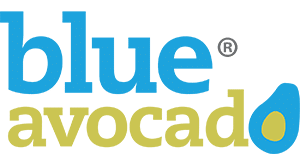A Nonprofit Leader’s Path to Becoming a Diversity and Inclusion Champion
Taking on diversity and inclusion in your nonprofit? What to do (and not to do) to have your efforts result on long-standing success

Five steps to help you communicate your diversity and inclusion strategy.
You have decided to make diversity and inclusion an organizational priority. What first steps should you take to ensure success? What mistakes can you avoid?
As CEO or executive director, your actions will have a significant impact on how diversity and inclusion will be viewed by employees and others in the community, so starting out with a clear, persuasive plan is essential.
5 steps to help you communicate your D&I strategy:
The keys to success lie in setting the new policy in place, communicating it clearly both internally and externally, and including all stakeholders in the development of the program.
Here are 5 steps to help you get there:
1. Explain Why Diversity and Inclusion Is Now an Organizational Priority
Too many nonprofit leaders state that diversity or inclusion (“D&I”) is an organizational priority, but then they continue with their exclusive focus on fundraising and dealing with the board. Others delegate diversity and inclusion to the Human Resources leader, which makes it solely an HR initiative. These approaches rarely work.
As the leader of your nonprofit, it is most effective if you explain to your employees why you are making diversity and inclusion an organizational priority. Is there a need to reflect the changing demographics of the populations you serve, pressure from the board, or have you come to this conclusion for personal or other reasons?
If you want employees to take you seriously, take the time to explain why this change is important to the future of your nonprofit and answer your team’s questions. This transparency will go a long way toward letting them know you are serious. Otherwise, you risk employees concluding that D&I is the next fad that will go away in time.
2. Tell Employees How They Will Benefit from This Change
Many employees are skeptical of change. Provide a picture of how the focus on D&I will affect employees in positive ways and create a better place to work. For example, employees will have greater flexibility and be able to improve the balance between their professional and personal lives if there is a focus on the needs of parents, millennials, and other employees who want more control over their schedules.
Explain how you expect creative new ideas to develop as employee diversity increases, which will lead to faster growth, higher impact, and more opportunity for everyone.
3. Clarify Expectations for Managers and Leaders
As you know, many organizational initiatives die at the doorstep of managers. If managers are not supportive of a new priority, it will fail. Part of your role is to clearly explain your expectations. Let them know if you expect them to increase the diversity of their respective departments, have diverse slates of candidates for open positions, enable employees to increase scheduling flexibility, and a host of other actions.
You must let managers know what you expect of them, how this translates into their annual performance evaluation, and where diversity is positioned relative to their other priorities. Lastly, supply them with the tools, training, and resources they’ll need so that they can become effective partners in progress toward your diversity and inclusion goals.
4. Involve Employees in Diversity and Inclusion Strategy Development
Your employees are a major source of ideas on how to make D&I a reality. You can engage them in numerous ways, including focus groups and surveys. Create D&I task forces or launch Employee Resource Groups, consisting of employees that reflect the differences in the workforce, including age, race, gender, sexual orientation, disabilities, and a host of other characteristics. Employees can offer productive solutions and build the momentum needed for success.
5. Communicate the Plan
Once you have a detailed plan with specific milestones, share it with employees and the board. Use this roadmap to report on progress and hold yourself and the nonprofit’s leaders accountable for implementing your D&I strategy.
Avoid these mistakes in your D&I strategy
Even with a solid plan in place, mistakes can derail your efforts.
Here are the top four common pitfalls to avoid:
1. Inconsistent Allocation of Time and Resources
Consistent allocation of time and money is essential for achieving D&I success. Employees will view cutting the budget or not allocating sufficient time negatively.
Since your credibility is on the line, do not make D&I an organizational priority if you are not able to devote the time and money needed to achieve lasting results.
2. Promoting the Wrong People
Promoting individuals who do not actively support diversity and inclusion is a big mistake made by many EDs. For example, if increasing flexibility is one of your core D&I strategies and you promote a manager who actively opposes increasing flexibility in their department, that sends a negative message to employees. Who you select for promotions sends a message about what you value.
You lose credibility when the people promoted do not reflect the values that you have stated are important.
One of the tough decisions you may have to make is whether to help managers and leaders who cannot or will not actively support D&I find employment elsewhere.
3. Failure to Support Diverse Talent
If you are hiring diverse talent into your organization, ensure that there is a plan in place to support their success.
Consider assigning an executive coach, buddy, or mentor who can explain the culture, how decisions get made, and how to gain support for new ideas.
New employees begin making decisions early regarding whether to stay with an organization. If a new hire does not feel welcome, they will begin planning their exit immediately. Prevent this costly outcome with a plan that welcomes employees from diverse backgrounds to your nonprofit and sets the conditions for their successful transition.
4. Selecting Diverse Candidates Based on Lower Standards
Selecting a woman, person of color, or someone else who is unqualified or ill prepared in order to meet a diversity objective is one of the worst actions an organization can take.
The person selected is set up for public failure, and this sends a message to your entire team that diversity and inclusion is really about quotas or numbers versus hiring the best person for the job. Selection decisions for new hires and promotions are critical for the organization’s performance.
It is essential to hold all candidates to the same high standards.
The Rewards of a Successful Diversity and Inclusion Strategy
If your initiative is successful, your nonprofit can become an organization where employees work together across a wide variety of differences in backgrounds to develop innovative, superior solutions for the people you serve.
Turnover will decrease because employees will enjoy a better work experience. High caliber candidates will apply to your nonprofit in greater numbers because your employees will share what a great place it is to work and confirm that diverse talent is welcome and able to contribute.
Progress Never Stops
Once you have achieved success on your journey to become a Diversity and Inclusion Champion, it is time to share what you have learned with others! Find nonprofit and corporate executive directors and CEOs with whom you can share best practices and ideas. Encourage your staff to do the same. No organization has all the answers, which is why it’s so valuable to learn from others.
Celebrate progress but strive to improve. This is what will make your nonprofit even more successful in the long run, an ongoing benefit from your decision to become a Diversity and Inclusion Champion.
Diversity Champion Quiz
Take the Blue Avocado quiz below to see how you’re doing as the leader of your nonprofit’s diversity efforts. You can also download the PDF version of the Blue Avocado Diversity Champion Quiz.
Quiz Instructions:
Please answer yes or no to the following questions:
1. Are you working with your board to ensure that it reflects the diversity of the community you serve?
Yes/No
2. Have you identified diverse employees as potential successors for your direct reports and other key positions?
Yes/No
3. Do you include diverse staff in meetings where important decisions are made?
Yes/No
4. Do you mentor diverse staff members?
Yes/No
5. Is improving diversity and inclusion one of the top goals of each of your direct reports?
Yes/No
6. Do you have a written three- to five-year plan to improve diversity and inclusion at your nonprofit?
Yes/No
7. Have you incorporated diversity and inclusion in at least three of your external speeches during the past year?
Yes/No
8. Is your organizational commitment to diversity and inclusion stated on your website and intranet?
Yes/No
9. Are the demographics of your workforce posted on your website?
Yes/No
10. During lunch and other informal meetings, do you take time to interact with diverse staff members?
Yes/No
Key (Total number of “Yes” responses):
9 to 10: Superior!
7 to 8: Good
5 to 6: Average
3 to 4: Fair
0 to 2: Poor

Michael Watson is Deputy Director, Human Resources for the Port Authority of New York and New Jersey. Prior roles he held include Senior Vice President, Talent and Culture for National 4-H Council and Senior Vice President, Human Resources and Diversity for Girl Scouts of the USA. Prior to Girl Scouts, Michael held positions at IBM Global Services, Time Warner Inc., and GE Capital. He is a GE Human Resources Management Program graduate and recipient of GE Capital’s Pinnacle Club and IBM’s Golden Circle awards. Michael served as the National Human Services Assembly’s Human Resources Council chair and was former board treasurer for the Nonprofit Workforce Coalition. Michael is currently on the boards of Manhattanville College and the Robert F. Kennedy Children’s Action Corps. He has a BA in economics from Yale University and MS in organizational management and human resource development from Manhattanville College. His publications include the chapter Diversity, Equity & Inclusion in Nonprofit Management 101.
You might also like:
- Vision Before Strategy: A Nonprofit’s Guide to Defining Success
- Hedging Your Bets: Rajiv Shah, and the Limits of Large-Scale Changemaking
- Unlocking Potential: Collective Leadership in Nonprofits
- From Crisis to Clarity: Five Steps to Demystify Succession Planning
- The Expanded Matrix Map: Leveraging Your Triple Bottom Line for Fundraising
You made it to the end! Please share this article!
Let’s help other nonprofit leaders succeed! Consider sharing this article with your friends and colleagues via email or social media.
About the Author
Michael Watson is Deputy Director, Human Resources for the Port Authority of New York and New Jersey. Prior roles he held include Senior Vice President, Talent and Culture for National 4-H Council and Senior Vice President, Human Resources and Diversity for Girl Scouts of the USA. Prior to Girl Scouts, Michael held positions at IBM Global Services, Time Warner Inc., and GE Capital. He is a GE Human Resources Management Program graduate and recipient of GE Capital’s Pinnacle Club and IBM’s Golden Circle awards. Michael served as the National Human Services Assembly’s Human Resources Council chair and was former board treasurer for the Nonprofit Workforce Coalition. Michael is currently on the boards of Manhattanville College and the Robert F. Kennedy Children’s Action Corps. He has a BA in economics from Yale University and MS in organizational management and human resource development from Manhattanville College. His publications include the chapter Diversity, Equity & Inclusion in Nonprofit Management 101.
Articles on Blue Avocado do not provide legal representation or legal advice and should not be used as a substitute for advice or legal counsel. Blue Avocado provides space for the nonprofit sector to express new ideas. The opinions and views expressed in this article are solely those of the authors. They do not purport to reflect or imply the opinions or views of Blue Avocado, its publisher, or affiliated organizations. Blue Avocado, its publisher, and affiliated organizations are not liable for website visitors’ use of the content on Blue Avocado nor for visitors’ decisions about using the Blue Avocado website.








I’d be interested in the authors view on legal compliance in this area. For example, the reference to hiring someone less qualified just because they are a diversity candidate as being dangerous to achieving your goal of increasing diversity is also dangerous because it is discriminatory and may subject you to a lawsuit from the more qualified candidates.
If a nonprofit hires someone who is clearly unqualified for the role, the organization is exposed to potential litigation. The safest approach is to ensure that you have a diverse, highly qualified slate of candidates that you can choose from. If you are using a search firm, push them to ensure that the slates they produce meet this criteria. Similarly, this should be an expectation of the HR department and the hiring managers.
Michael Watson
[…] A Nonprofit Leader’s Path to Becoming a Diversity and Inclusion Champion […]